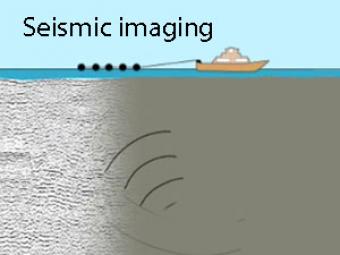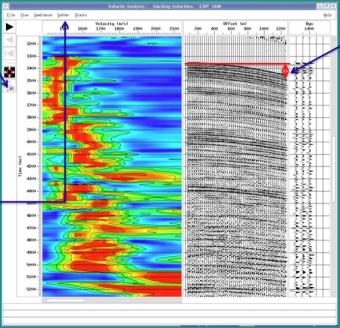
Reflection seismology uses man-made sources to create sound waves. Sources in the water are typically airguns, large, metal canisters which fill up with compressed air that is suddenly released like the popping of a balloon. (On land, vibration trucks can shake the ground very powerfully to produce sound waves.)
The sound waves travel through the earth and reflect off boundaries between rock layers having different acoustic properties. The reflections are digitally recorded by small instruments called geophones. The data is processed with computers to produce seismic cross sections that can be interpreted by seismologists.
Sound waves can be used to "see" below the ground
The sound waves reflect off rock layers and return to the ship
Powerful computers collect the data and create a seismic image
The resultant seismic image is interpreted by seismologists

This presentation and associated activity introduces students to both the concepts of processing marine seismic data as well a providing an introduction to PROMAX software.
We encourage the reuse and dissemination of the material on this site as long as attribution is retained. To this end the material on this site, unless otherwise noted, is offered under Creative Commons Attribution (CC BY 4.0) license